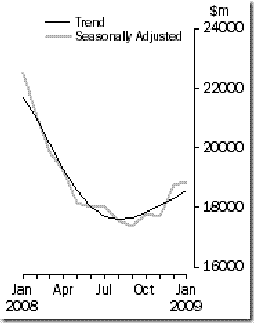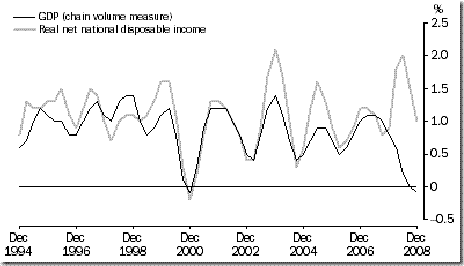It has taken me much longer than expected to start catching up from the effects of the move. I say start, because I am still running behind. I will continue the series I started on Problems with modern mechanistic management - introduction, but I wanted to do a catch-up post first on the on-ground effects of the Rudd Government's various stimulus packages as I see them working their way through.
As you might expect, the effects have been variable. We talk about the Australian or US economies as though they actually exist. In one sense they do of course, but they are also averages concealing great local or regional variation.
For other reasons, I spend a fair bit of time monitoring the media and especially the press in regional Australia. At this level it is much easier to see specific impacts because they attract reporting in a way not possible in the metropolitan media.
The comments that follow are necessarily impressionistic. There are no statistics to measure the things that I am talking about.
As you might expect to begin with, the effects of the economic downturn itself vary greatly at local level. Some regional centres dependent on mining or with significant local manufacturing have been hit quite hard. In other less trade exposed centres, the recession has had little impact. Whereas at a macro level, people are worried about unemployment, the problem for these centres remains attracting the skilled labour they need.
It is often forgotten in Australia that most of our booms are linked in some way to real estate and construction booms in the major cities. Downturns are actually quite helpful to some other parts of the country because it makes it easier to attract staff.
The higher first home buyers grant on existing homes has created something of a mini-real estate boom in some of the larger regional centres, with quite noticeable increases in sales and in prices at the lower end of the market. Because regional real estate prices are lower than city prices making it easier to buy, demand has spilled over into mid-priced homes.
The direct payments made to pensioners and others just before Christmas had quite a pronounced effect on retail sales.
On-ground effects here were always going to be variable because the proportion of recipients varies between communities. Many regional centres have a higher proportion of people on Family Tax Benefits as well as an older population. Some of these centres saw a very large boost to sales, with clear record trading.
It was always going to be the case that capital spend items would take longer than the Federal Government allowed. The grants to local councils were the first to have an impact simply because the councils were better geared for action. Local newspapers have been full of stories about small individual projects.
This appears to have cushioned another effect of the global financial crisis that I was insufficiently aware of. Many local councils invested reserve funds in triple A rated instruments such as CDOs that proved to be far from triple A. Armidale City Council, for example, faces a financial loss of up to $A12 million, a very large sum given the council's size.
I haven't seen this much reported, but on a surface skim it appears that the consequent legal class actions - including actions against the ratings agencies -are likely to be quite significant.
One of the most interesting things is the way in which the initiatives in the social housing area have started to feed through.
At least in NSW, the local papers have been full of Housing NSW advertisements seeking, among other things, DA (Development Approved) medium density sites. The intent here is to partner with local developers, including especially those who have been unable to find funding.
I have been meaning to do a macro assessment of this in terms of scale relative to the size of the sector. Looking at the micro-level, I think that one effect will be to empty the existing development pipe-line.
Replicated across the country, this is likely to draw new development planning forward. The key constraint is likely to be - as it was before - the availability of suitable land.
Now add in the initiatives intended to address the maintenance backlog in social housing. This uses the same trade skills as new construction. Again, the local affects are likely to be significant in many regional centres that have significant existing  social housing stocks.
social housing stocks.
Turning again to the macro level, leading indicators such as new dwelling finance commitments (see chart) are now showing a clear upward trend.
All this means that the residential building sector at least is now showing all the signs of a very substantial surge.
This will still take time to feed through into increased construction activity.
I am not absolutely sure of the lags here. On the surface, we are likely to see a steady ramp-up in building activity in the second half of the 2009, with something of a surge in 2010.


